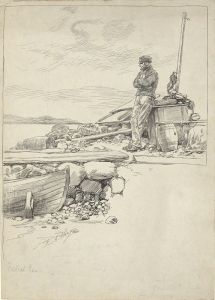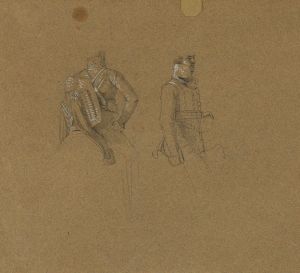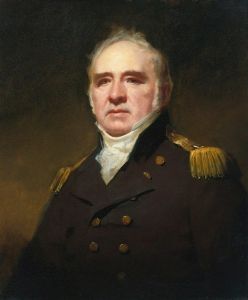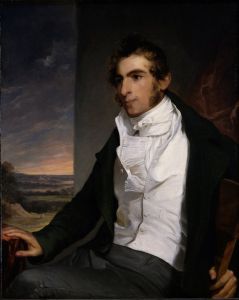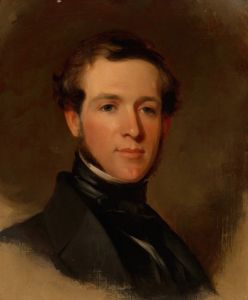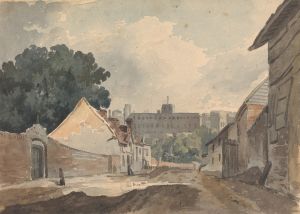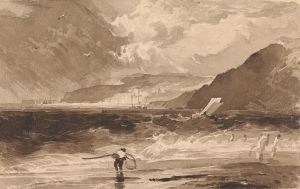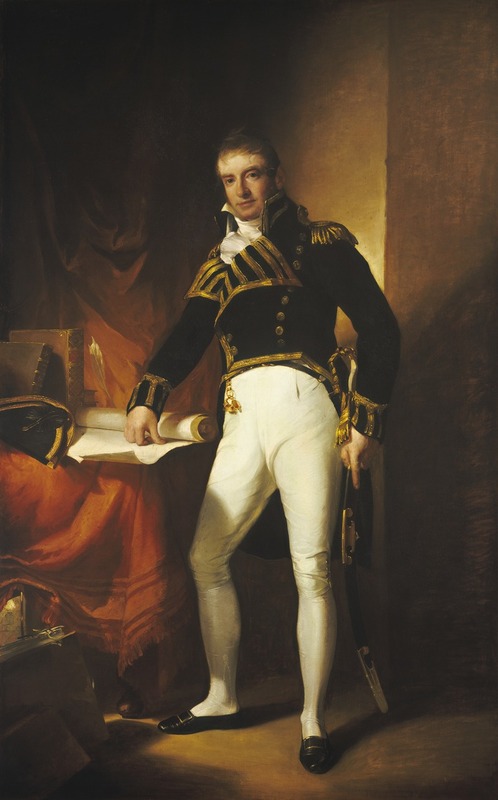
Captain Charles Stewart
A hand-painted replica of Thomas Sully’s masterpiece Captain Charles Stewart, meticulously crafted by professional artists to capture the true essence of the original. Each piece is created with museum-quality canvas and rare mineral pigments, carefully painted by experienced artists with delicate brushstrokes and rich, layered colors to perfectly recreate the texture of the original artwork. Unlike machine-printed reproductions, this hand-painted version brings the painting to life, infused with the artist’s emotions and skill in every stroke. Whether for personal collection or home decoration, it instantly elevates the artistic atmosphere of any space.
Thomas Sully's portrait of Captain Charles Stewart is a notable example of early 19th-century American portraiture, capturing the likeness of a prominent figure in American naval history. Thomas Sully, an English-born American painter, was renowned for his portraits, which often depicted influential figures of his time with a blend of realism and idealism. His work contributed significantly to the development of American art during this period.
Captain Charles Stewart, the subject of this portrait, was a distinguished officer in the United States Navy. Born on July 28, 1778, in Philadelphia, Pennsylvania, Stewart had a long and illustrious career, serving in the Quasi-War with France, the First Barbary War, and the War of 1812. He is perhaps best known for his command of the USS Constitution, famously known as "Old Ironsides," during the War of 1812. Under his leadership, the USS Constitution achieved several victories against British ships, bolstering American morale and naval reputation.
The portrait by Sully is believed to have been painted around 1811, a period when Stewart was gaining recognition for his naval exploits. Sully's technique in this painting reflects his skill in capturing the character and stature of his subjects. The portrait likely presents Stewart in his naval uniform, a common practice for military portraits of the time, emphasizing his role and achievements in the Navy.
Sully's work is characterized by its attention to detail and the ability to convey the personality and status of the sitter. In the case of Captain Charles Stewart, Sully would have aimed to depict not only his physical likeness but also his distinguished service and leadership qualities. The portrait serves as both a personal likeness and a historical document, offering insight into the appearance and demeanor of one of America's naval heroes.
Thomas Sully's portraits were highly sought after during his lifetime, and he painted many prominent figures, including presidents, military leaders, and social elites. His style was influenced by the English portrait tradition, particularly the works of Thomas Lawrence and Joshua Reynolds, yet he adapted these influences to suit the American context, focusing on clarity, elegance, and a sense of immediacy.
The portrait of Captain Charles Stewart by Thomas Sully remains an important piece of American art history, reflecting the intersection of art and history during a formative period in the United States. It stands as a testament to Stewart's contributions to the nation and Sully's prowess as a portrait artist. The painting is a valuable artifact for both art historians and those interested in the history of the United States Navy, offering a glimpse into the past through the lens of one of America's most respected portraitists.





